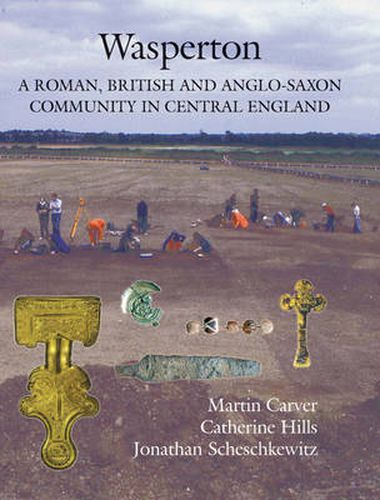Readings Newsletter
Become a Readings Member to make your shopping experience even easier.
Sign in or sign up for free!
You’re not far away from qualifying for FREE standard shipping within Australia
You’ve qualified for FREE standard shipping within Australia
The cart is loading…






(Edited by Martin Carver) For decades scholars have puzzled over the true story of settlement in Britain between the fifth and eight centuries. Did the Romans leave? Did the Anglo-Saxons invade? What happened to the British? New light on these questions comes unexpectedly from Wasperton, a small village on the Warwickshire Avon, where archaeologists had the good fortune to excavate a complete cemetery and its prehistoric setting. The community reused an old Romano-British agricultural enclosure, and built burial mounds beside it.There was a score of cremations in Anglo-Saxon pots; but there were also unfurnished graves lined with stones and planks in the manner of western Britain. In a pioneering analysis, including radiocarbon and stable isotopes, the authors of this book have put this variety of burial practice into a credible sequence, and built up a picture of life at the time. Here there were people who were culturally Roman, British and Anglo-Saxon, pagan and Christian in continuous use of the same graveyard and drawing on a common inheritance.Here we can see the beginnings of England and the people who made it happen - not the kings, warriors and preachers, but the ordinary folk obliged to make their own choices: choices about what nation to build and which religion to follow. MARTIN CARVER is Professor Emeritus of Archaeology at the University of York; Dr CATHERINE HILLS is Senior Lecturer in Anglo-Saxon Archaeology at the University of Cambridge; Dr JONATHAN SCHESCHKEWITZ is Officer with the Ancient Monuments authority of Stuttgart.
$9.00 standard shipping within Australia
FREE standard shipping within Australia for orders over $100.00
Express & International shipping calculated at checkout
(Edited by Martin Carver) For decades scholars have puzzled over the true story of settlement in Britain between the fifth and eight centuries. Did the Romans leave? Did the Anglo-Saxons invade? What happened to the British? New light on these questions comes unexpectedly from Wasperton, a small village on the Warwickshire Avon, where archaeologists had the good fortune to excavate a complete cemetery and its prehistoric setting. The community reused an old Romano-British agricultural enclosure, and built burial mounds beside it.There was a score of cremations in Anglo-Saxon pots; but there were also unfurnished graves lined with stones and planks in the manner of western Britain. In a pioneering analysis, including radiocarbon and stable isotopes, the authors of this book have put this variety of burial practice into a credible sequence, and built up a picture of life at the time. Here there were people who were culturally Roman, British and Anglo-Saxon, pagan and Christian in continuous use of the same graveyard and drawing on a common inheritance.Here we can see the beginnings of England and the people who made it happen - not the kings, warriors and preachers, but the ordinary folk obliged to make their own choices: choices about what nation to build and which religion to follow. MARTIN CARVER is Professor Emeritus of Archaeology at the University of York; Dr CATHERINE HILLS is Senior Lecturer in Anglo-Saxon Archaeology at the University of Cambridge; Dr JONATHAN SCHESCHKEWITZ is Officer with the Ancient Monuments authority of Stuttgart.